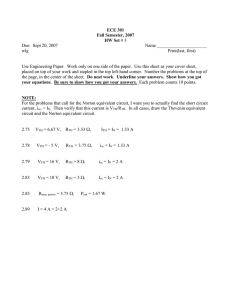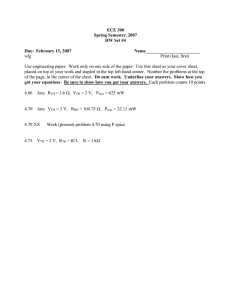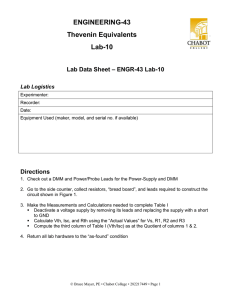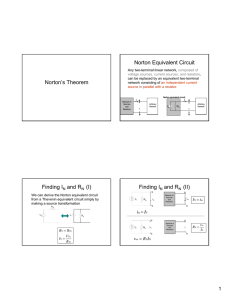BI AV − = IR VV − = B RA V = = , + IR VV − = – Rth Vth Iab
advertisement
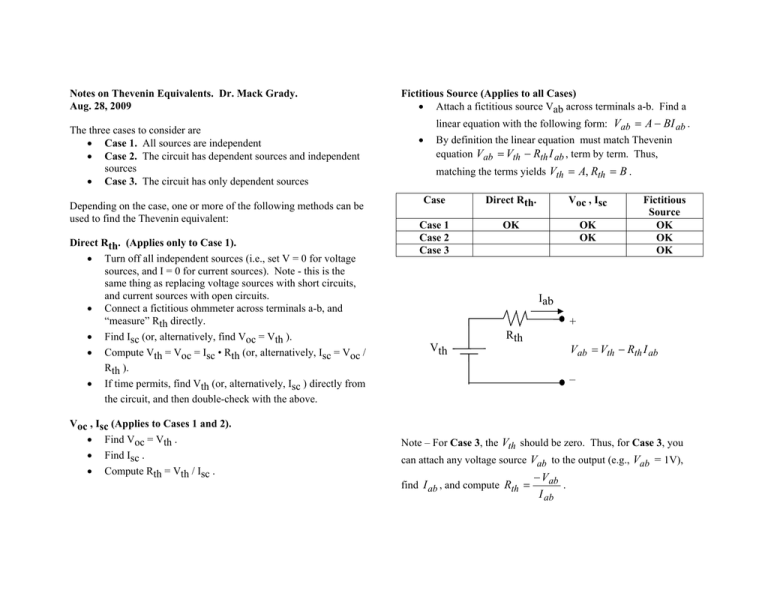
Notes on Thevenin Equivalents. Dr. Mack Grady. Aug. 28, 2009 The three cases to consider are • Case 1. All sources are independent • Case 2. The circuit has dependent sources and independent sources • Case 3. The circuit has only dependent sources Depending on the case, one or more of the following methods can be used to find the Thevenin equivalent: Direct Rth. (Applies only to Case 1). • Turn off all independent sources (i.e., set V = 0 for voltage sources, and I = 0 for current sources). Note - this is the same thing as replacing voltage sources with short circuits, and current sources with open circuits. • Connect a fictitious ohmmeter across terminals a-b, and “measure” Rth directly. • Find Isc (or, alternatively, find Voc = Vth ). • Compute Vth = Voc = Isc • Rth (or, alternatively, Isc = Voc / Rth ). • If time permits, find Vth (or, alternatively, Isc ) directly from the circuit, and then double-check with the above. Voc , Isc (Applies to Cases 1 and 2). • Find Voc = Vth . • Find Isc . • Compute Rth = Vth / Isc . Fictitious Source (Applies to all Cases) • Attach a fictitious source Vab across terminals a-b. Find a • linear equation with the following form: Vab = A − BI ab . By definition the linear equation must match Thevenin equation Vab = Vth − Rth I ab , term by term. Thus, matching the terms yields Vth = A, Rth = B . Case Direct Rth. Voc , Isc Case 1 Case 2 Case 3 OK OK OK Fictitious Source OK OK OK Iab + Vth Rth Vab = Vth − Rth I ab – Note – For Case 3, the Vth should be zero. Thus, for Case 3, you can attach any voltage source Vab to the output (e.g., Vab = 1V), find I ab , and compute Rth = − Vab . I ab
